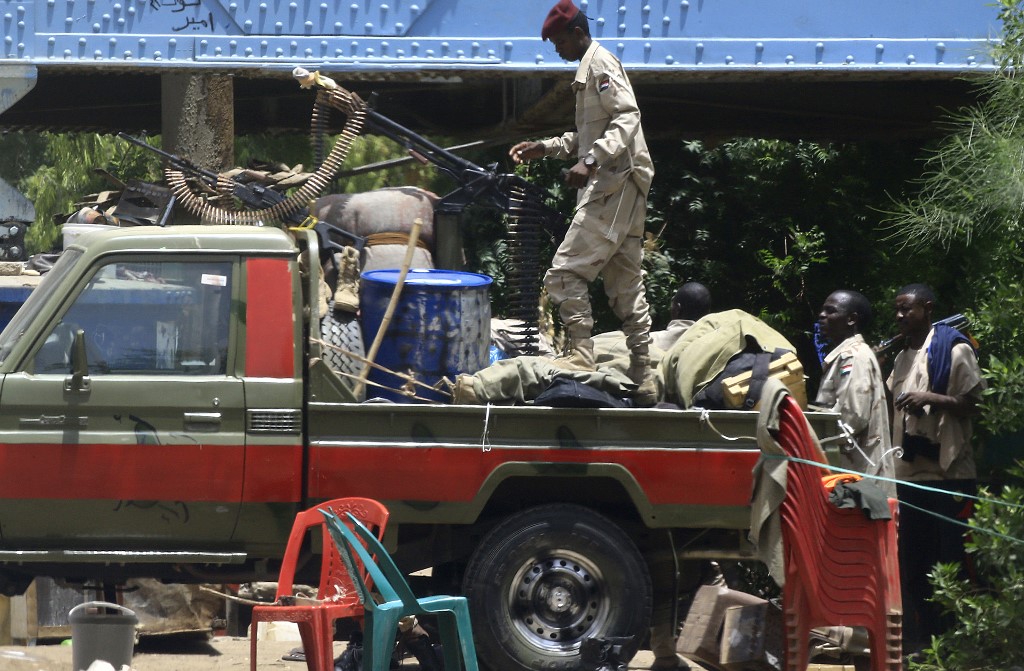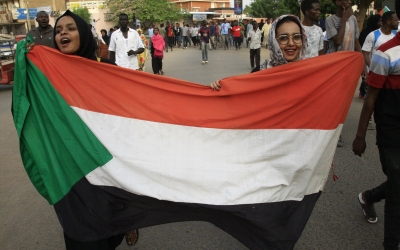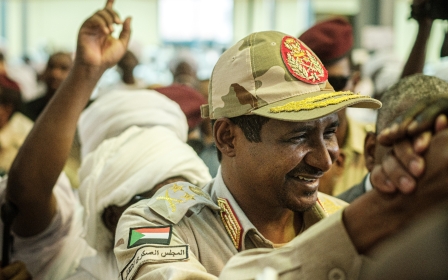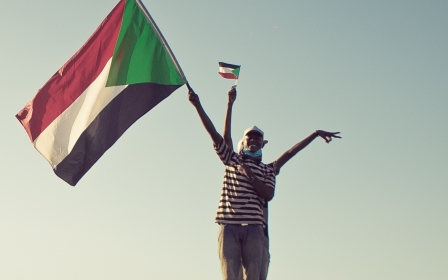How history has informed Sudan's revolution
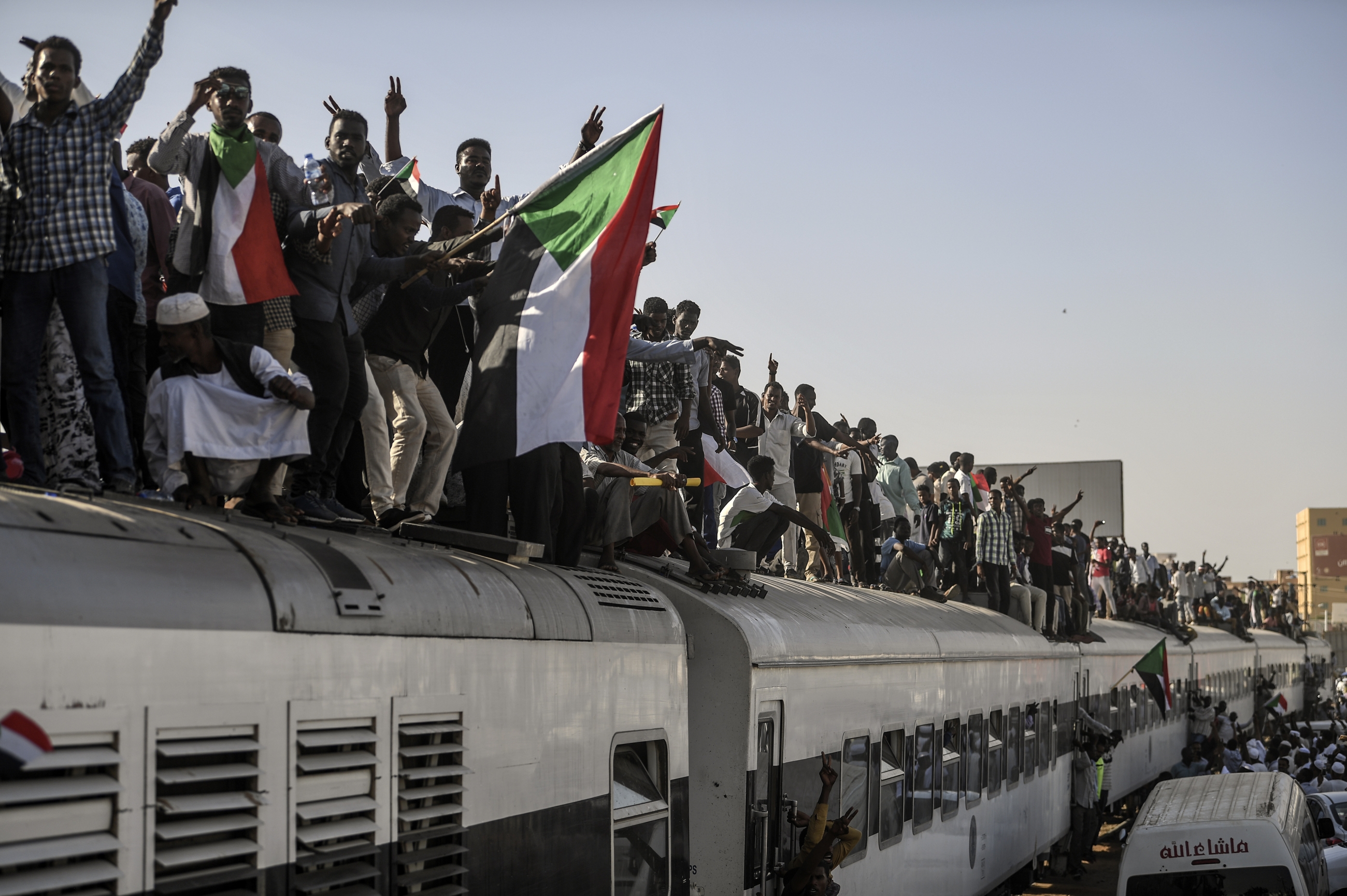
As the throbbing of social media posts has set the rhythm of daily life in Khartoum since the Sudanese revolution began last December, it has become necessary to anchor the uprising in a broader historical perspective.
Revolutions are as much discursive acts as political ones, striving to give sense to the present by looking for historical dynamics - to mobilise past references to shape the current course of events.
As such, the Sudanese revolutionary movement has been teeming with historical references. The extensive use of the term thawra in songs and slogans harkens back to the previous Sudanese revolutions of 1883, 1924, 1964 and 1985. The root of the Arabic term refers to the notion of excitement and agitation before a radical transformation of the political system, the sense more commonly conveyed by its English translation.
Political momentum
The many setbacks in negotiations between the Transitional Military Council and opposition groups have confirmed the resilience of the authoritarian system established in 1989, and shifted political momentum to the local revolutionary committees, who have fuelled constant political tensions in the capital through roadblocks, burning tyres and direct confrontations with the security apparatus, and so shaped the properly revolutionary dimension of the Sudanese movement.
New MEE newsletter: Jerusalem Dispatch
Sign up to get the latest insights and analysis on Israel-Palestine, alongside Turkey Unpacked and other MEE newsletters
The agreement signed on 3 August will be confronted with innumerable difficulties, and quite crucially the purging of the dense network of institutions and administrations that have monitored Sudanese society for the past 30 years. Sudan’s thawra is only the first of many steps towards a political revolution, inscribed in larger historical dynamics.
Revolutionary histories
Past revolutionary models were mobilised to support arguments on the objectives of Sudan's uprising
Commentators were keen to link the first revolutionary tremors in Atbara on 19 December to the city’s stature in Sudanese history, with regards to its communist heritage and the important role of railway trade unions. Considered as one of the focal points of radical politics in Sudan in the second half of the twentieth century, particularly after the failed 1971 communist coup, the city witnessed under the Nimeiry regime the crushing of its political activities and economic network.
The railway system was progressively abandoned, and the transportation system restructured around roads and trucks. Atbara might represent the failure of the current regime, in a region it thought it had won over in the 1990s, while also conjuring the idealised memory of a time when Sudan benefited from one of the most sophisticated transportation systems on the African continent.
The city could much more easily be erected as a symbol than al-Damazin, a more peripheral city both geographically and historically, where the first protests began on 13 December.
Military coups
The current revolution has also been compared to the two previous revolutions of 1964 and 1985, either to point out differences in the logics of popular mobilisation, or to set out guidelines aimed at avoiding the reiteration of their failures, both having been rapidly curtailed by military coups.
Informal discussions with protesters show that such references are not confined to Sudan’s historical experiences, but encompass revolutionary movements ranging from the Arab Spring of 2011 - particularly the Egyptian example - to the French revolution of 1789.
The sit-in outside Sudan’s army headquarters, violently dispersed on 3 June, fuelled intense discussions among protesters, and re-politicised those who had felt disenfranchised and marginalised.
Past revolutionary models were mobilised to support arguments on the objectives of Sudan’s uprising. The eventual failure of the Egyptian revolution, crushed by a 2013 coup, was analysed as being the result of the permanence of the “deep state,” and thus a lesson for radical action against Sudan’s National Congress Party. The French revolution was sometimes mentioned as an example of a complete and definitive political upheaval founded on national unity.
Whose history?
Historical references have also become evident through the greetings of “kandaka” to female protesters. This reference to the Nubian queens of the Meroitic kingdoms conjures a prestigious past, against the current economic difficulties that have plagued Sudan for almost a decade. It also emphasises the role of Sudanese women in the revolution and refers to the pre-Islamic past of Sudan, perhaps to lay the foundations for a post-Islamist future.
Furthermore, researcher Azza Ahmed Abdel Aziz convincingly argued that the success of the image of Alaa Salah in a white tobe harkened back to the foundation of the women’s movement in the late 1950s. Still such representations are quite specific to northern Sudanese women and tend to restrict political participation to a certain “educated” riverain elite.
The references of the current Sudanese uprising tend to sideline such historical experiences as the 1883 Mahdist revolution or the 1924 White Flag revolution. The later revolutionary movements are much easier to mobilise, not only because eyewitnesses of the 1964 and 1985 revolutions are still around, but also because they pertain to a more consensual collective memory for dominant political actors in Sudan.
Indeed, the Mahdist revolution led to a period still very much thought of today as despotic, violent and divisive. In the past few months, some observers have thus been keen to put this into perspective with the new influence of the feared Rapid Support Forces (RSF) in the capital.
In the same vein, the 1924 revolution was sidelined within Sudanese collective memory, according to author Elena Vezzadini, because of the lingering assumption that it was not a purely Sudanese movement, but the result of Egyptian manipulations on vulnerable, “denationalised Sudanese,” and thus did not fit the national narrative.
National identity
The emphasis put on the two last revolutionary moments - or on a mythified, seemingly apolitical and non-contentious ancient history - sidesteps the complexities and tensions of the developments of a national Sudanese identity. This is in line with a certain historical vision that has favoured a Nilo-centric conception of Sudan’s political space, which tended to marginalise eastern, western and southern populations alike.
Denunciations of the role of Mohamed Hamdan Dagalo (aka Hemeti) in the current revolution, and the crimes he is accused of, could be interpreted through the prism of intertwined power and identity structures, fuelled by his perceived breach of the Nile valley political hegemony run by riverain elites.
The consensus that seemed to characterise the early months of the revolution ... appears to have slowly cracked along complex lines
Interestingly, the consensus that seemed to characterise the early months of the revolution in its unequivocal condemnation of the ruling party appears to have slowly cracked along complex lines that cross ethnic, social and gendered identities. If the riverain elites and most of the emerging Sudanese middle class are unified in their refusal of RSF violence and Hemeti’s newly acquired influence, more marginalised neighbourhoods have been the scene of intense debates about the veracity of the role of the RSF in the repression of the revolution and rumours of Hemeti's acts of generosity in destitute areas. Social media rarely convey their voice and the complexity of those discussions. Without condoning his actions, some nonetheless invest him with the hopes of a brighter future and the restructuration of long term historical dynamics in their favour.
As such, the Sudanese revolution reveals as much about the many fractures of Sudanese history as it actively reshapes it.
The views expressed in this article belong to the author and do not necessarily reflect the editorial policy of Middle East Eye.
Middle East Eye delivers independent and unrivalled coverage and analysis of the Middle East, North Africa and beyond. To learn more about republishing this content and the associated fees, please fill out this form. More about MEE can be found here.



